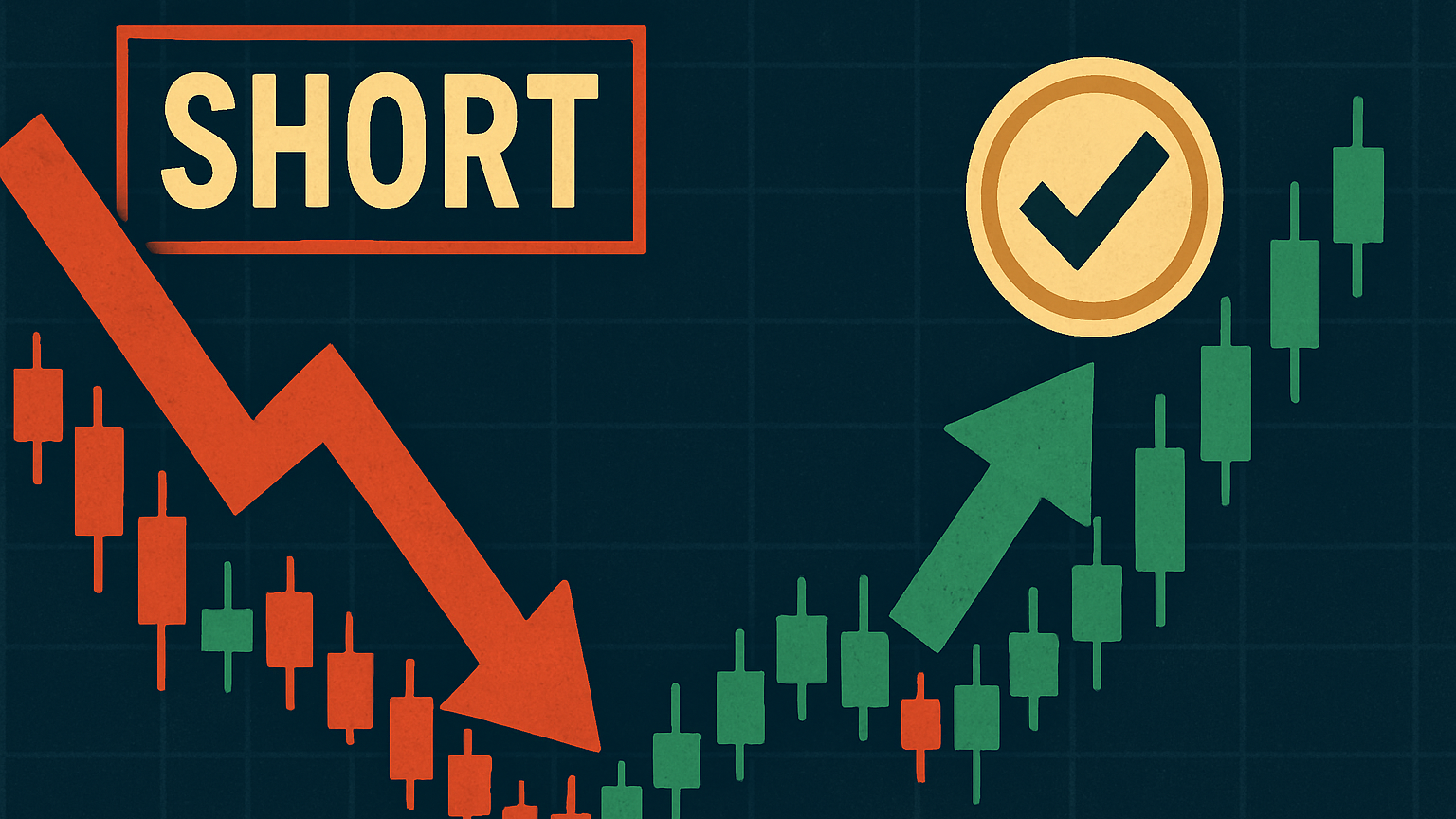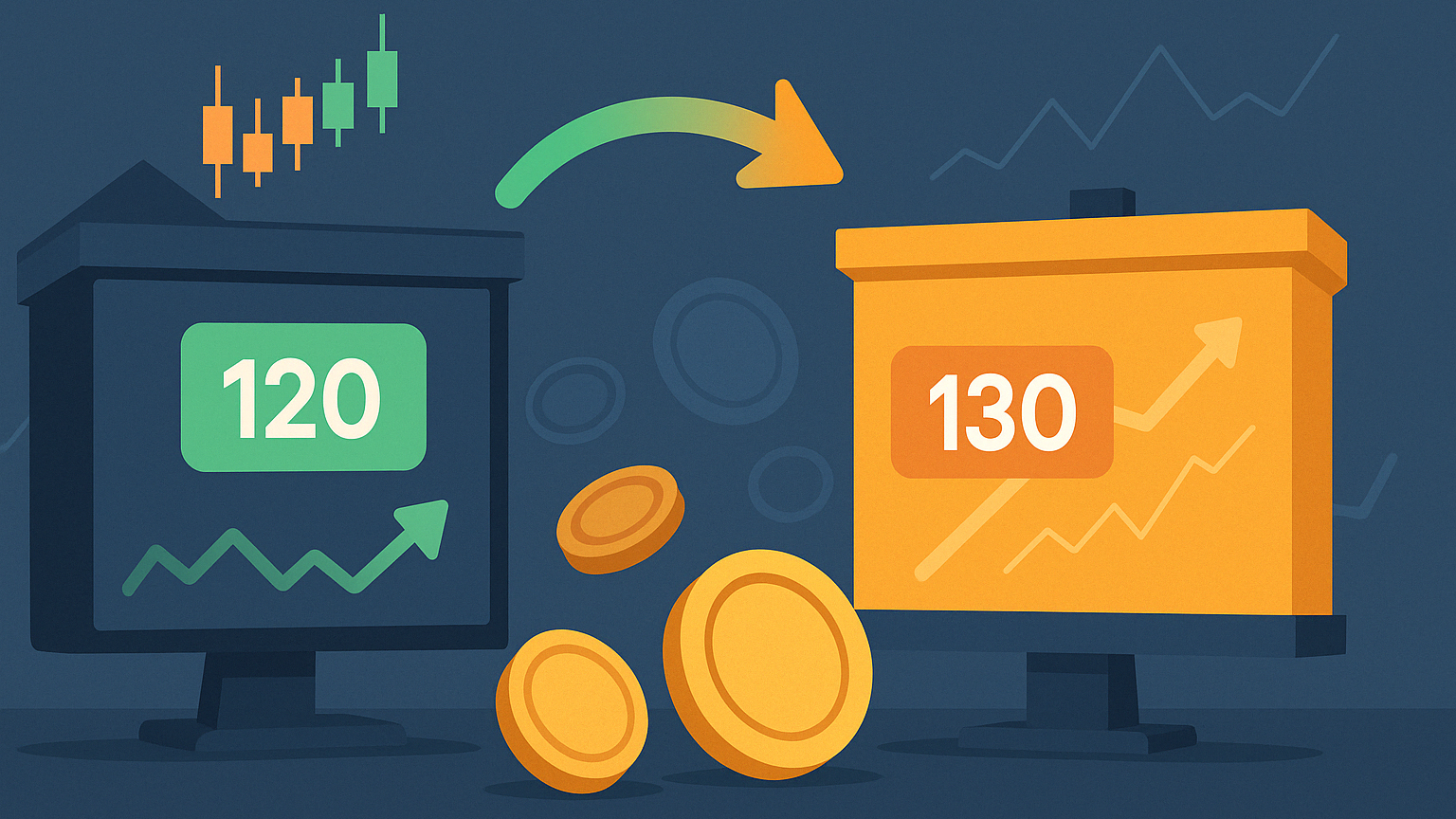Explore the strengths and weaknesses of AI scalping signals versus manual analysis in trading strategies, and learn how to combine both for optimal results.
Choosing the right trading strategy depends on your goals and style. AI scalping signals offer speed, consistency, and 24/7 monitoring, while manual analysis provides flexibility, intuition, and adaptability to unexpected events. Here’s a quick comparison to help you decide:
Key Differences:
- AI Scalping Signals: Fast, automated, emotion-free, but relies on historical data and struggles with unpredictable events.
- Manual Analysis: Human-driven, adaptable to complex market dynamics, but slower and prone to emotional biases.
Quick Comparison:
| Aspect | AI Scalping Signals | Manual Analysis |
|---|---|---|
| Speed | Executes trades in milliseconds | Slower, depends on human reaction time |
| Operation | Runs 24/7 without breaks | Limited to trader’s availability |
| Decision Making | Algorithm-based, no emotions | Relies on experience, influenced by emotions |
| Adaptability | Handles programmed scenarios | Adapts to unexpected changes |
| Cost | High startup cost, low upkeep | Lower initial cost, higher time investment |
| Customization | Limited to pre-set parameters | Fully customizable strategies |
Takeaway:
For the best results, many traders combine both methods—using AI for speed and efficiency while relying on manual oversight for critical decision-making. Tools like LuxAlgo support this hybrid approach by offering advanced indicators for both strategies.
Pros and Cons of AI Scalping Signals
Benefits of AI Scalping Signals
AI scalping signals have changed the game in trading, offering some clear advantages. One major benefit is their ability to process market data in milliseconds, identifying opportunities that would be impossible for humans to catch [1].
These systems work around the clock, monitoring markets 24/7. This constant activity ensures traders don’t miss out on opportunities, especially in markets like cryptocurrency, where trading never stops [2].
Another big plus? AI eliminates emotional decision-making. It executes trades consistently, even in chaotic market conditions [1]. Many modern AI systems can also adjust strategies over time by analyzing historical trends. For example, they can automatically tweak stop-loss and take-profit settings based on market volatility, helping to safeguard traders' investments [2].
Still, with all these benefits, AI scalping signals come with their own set of challenges.
Limitations of AI Scalping Signals
One key limitation is their reliance on historical data. While they’re great at spotting patterns, they can struggle during unexpected market events [1].
Technical issues are another concern. Connectivity problems or system crashes can disrupt trades, especially during volatile periods when timing is everything.
AI systems also have trouble interpreting complex market dynamics. They excel at crunching numbers but may overlook qualitative factors like shifts in market sentiment due to geopolitical events or regulatory announcements—something seasoned traders might pick up on [1].
Knowing these pros and cons can help traders decide whether to rely on AI tools or stick with manual analysis for their trading strategies.
| Aspect | Strengths | Limitations |
|---|---|---|
| Speed & Execution | Processes data instantly, automates trades | May act too quickly in volatile conditions |
| Data Processing | Handles large volumes of market data | Relies heavily on the quality of historical data |
| Operation Time | Monitors markets 24/7 | Needs regular updates and maintenance |
| Decision Making | Consistent, emotion-free trading | Misses subtle, qualitative market factors |
| Adaptability | Learns from market trends | Struggles with completely new or unpredictable events |
Pros and Cons of Manual Analysis
Benefits of Manual Analysis
Manual analysis brings certain strengths to the table that AI systems can't entirely replicate. Human traders are skilled at interpreting complex market dynamics and adjusting to unexpected changes. They can factor in qualitative elements like breaking news or shifts in regulations, offering a level of market understanding that automated systems might miss. With experience, traders can rely on intuition and technical analysis to spot opportunities that algorithms often overlook.
Limitations of Manual Analysis
However, manual analysis does come with its challenges. Emotional factors like fear and greed can cloud judgment, leading to poor decisions, especially in volatile markets. Unlike AI, humans are constrained by physical and mental limits, making round-the-clock market monitoring impossible. Additionally, manual analysis is slower at processing and acting on market data, which can mean missed opportunities in fast-moving markets.
| Aspect | Strengths of Manual Analysis | Limitations of Manual Analysis |
|---|---|---|
| Decision Making | Interprets complex contexts | Prone to emotional biases |
| Market Response | Adapts to unexpected situations | Slower reaction times |
| Operation Hours | High-quality analysis during active hours | Limited by human stamina |
| Pattern Recognition | Offers deeper market insights | Performance can be inconsistent |
| Risk Management | Adjusts strategies flexibly | Affected by psychological pressures |
To address these challenges, many traders now use a hybrid approach, blending manual analysis with AI tools like LuxAlgo. This approach combines human judgment with the speed and precision of technology, creating a more balanced and effective trading strategy. By understanding the pros and cons of manual analysis, traders can make informed decisions about integrating AI tools or sticking to traditional methods.
Comparing AI Scalping Signals and Manual Analysis
Comparison Table
| Aspect | AI Scalping Signals | Manual Analysis |
|---|---|---|
| Execution Speed | Executes trades in milliseconds | Depends on human reaction time |
| Operating Hours | Runs 24/7 without interruption | Limited to trader's availability |
| Data Processing | Analyzes multiple data points instantly | Processes data sequentially |
| Decision Making | Relies on algorithms, free of emotions | Influenced by experience and emotions |
| Market Adjustment | Adjusts to market changes instantly | Adapts more slowly |
| Cost | Higher initial cost, lower ongoing expenses | Lower initial cost, higher time investment |
| Customization | Restricted to programmed parameters | Strategies can be adjusted freely |
| Risk Management | Applies rules consistently | Depends on trader's discretion |
This table outlines the key differences, helping traders decide which approach better suits their needs.
Choosing Between AI Scalping Signals and Manual Analysis
Deciding between AI and manual trading methods boils down to personal goals, market conditions, and trading style. Manual analysis can shine in unpredictable markets or during major news events that require human insight. It's ideal for traders who value hands-on control and can dedicate time to monitoring the markets.
For those who want the best of both worlds, combining AI's speed with manual oversight can be a powerful solution. Platforms like LuxAlgo make this possible by offering advanced tools and integrations to support both strategies. Many traders use AI for quick execution while relying on manual input for strategy adjustments and risk management.
Examples of AI Scalping Signals and Manual Analysis in Use
Examples of AI Scalping Signals in Use
AI scalping signals, like those used by Telegram Signal Copier AI, demonstrate the ability to handle high-frequency trading by executing trades instantly and consistently, even in unpredictable markets [1].
These systems are designed to adjust risks automatically, analyze multiple markets at once, and execute trades without errors. This ensures reliable performance, even when market conditions are unstable. When combined with advanced tools like LuxAlgo's indicators, AI scalping systems use detailed technical analysis to improve signal accuracy and automate trades on external platforms.
While AI systems are unmatched in speed and accuracy, there are still situations where human judgment and flexibility are essential.
Examples of Manual Analysis in Use
With LuxAlgo's tools, traders can study price movements, trading volume, and market trends to fine-tune their strategies and respond to live market conditions. These indicators assist in spotting critical market levels, confirming trends, and adjusting strategies as needed.
Manual traders can effectively:
- Adjust their strategies during major economic events
- Analyze market sentiment using diverse data sources
- Optimize entry and exit points based on live market behavior
Success in manual analysis comes from combining discipline with advanced tools like LuxAlgo's features [3]. This approach allows traders to handle complex market scenarios effectively, emphasizing the complementary strengths of manual judgment and automated precision discussed earlier.
LuxAlgo: A Tool for Scalping Strategies

LuxAlgo’s Signals & Overlays Toolkit can help traders deploy effective scalping strategies by providing clear, real-time signals and a flexible overlay system. One of the key techniques involves using lower sensitivity values, making the signals more responsive to quick market movements—essential for scalping.
Additionally, the toolkit includes a dedicated scalping preset designed to optimize short-term trades. By combining this preset with lower sensitivity settings, traders can react faster and capture profits in highly volatile scenarios.
Another powerful feature is the Trend Catcher, which helps identify early trend changes. For scalpers, catching a new trend at its inception can significantly increase profit potential. The Trend Catcher works seamlessly with the other toolkit elements, giving traders a comprehensive set of indicators for timing their entries and exits with precision.
While LuxAlgo doesn’t execute trades by itself, the Signals & Overlays Toolkit can be integrated with third-party automation platforms for a hybrid approach—combining AI-driven execution with human oversight. This synergy of speed and intuition is a key advantage for traders who specialize in fast-paced scalping strategies.
Features of LuxAlgo
LuxAlgo's toolkit is packed with features to enhance trading strategies. Here's a breakdown of its key components:
| Feature Category | Components | Benefits for Scalping |
|---|---|---|
| Analysis Tools | Price Action Concepts, Volume Analysis, Trend Detection | Helps spot market patterns in real time |
| Strategy Development | AI Backtesting Assistant, Screeners | Enables data-driven strategy adjustments |
| Platform Integration | TradingView Compatibility, Multi-platform Support | Ensures a smooth, efficient workflow |
These features work together to support both AI-powered and manual trading approaches, making LuxAlgo a versatile tool for traders.
Supporting AI Scalping and Manual Analysis
LuxAlgo caters to both AI-driven scalping and manual trading strategies by offering specialized tools and resources:
-
For AI scalping strategies:
- Advanced indicators that integrate with third-party automation platforms
- Precise alert systems for automated trade execution
- AI-powered backtesting tools to refine strategies
-
For manual analysis:
- Real-time technical analysis tools for quick market evaluation
- Access to educational resources through the LuxAlgo community
- Around-the-clock support from both the LuxAlgo team and its community
While LuxAlgo doesn’t execute trades itself, its tools are designed to enhance scalping strategies. By integrating its indicators with automation platforms, traders can benefit from a hybrid approach—combining the accuracy of AI with the insights of manual analysis. This blend of technology and human expertise is a key advantage for scalping strategies.
Conclusion: Balancing AI Scalping Signals and Manual Analysis
Key Points
AI scalping signals and manual analysis each bring unique strengths to trading. AI signals handle trades with split-second accuracy and operate without emotional bias. On the other hand, human traders bring essential market intuition and the ability to adapt to unexpected situations—something AI can’t fully mimic.
By combining AI's speed and consistency with human judgment, traders can create a more effective trading strategy. This blend allows for precise automation while keeping critical decisions under human control.
| Aspect | Benefits of a Hybrid Approach |
|---|---|
| Strategic Control | AI handles execution; humans oversee key decisions |
| Risk Management | Automated systems paired with experience-driven tweaks |
| Market Response | Fast execution meets thoughtful, strategic adjustments |
| Performance | Reliable operations with room for tailored solutions |
Final Advice
To get the most out of both AI and manual trading, consider these strategies:
- Test AI tools alongside your current methods, gradually increasing automation as you confirm results.
- Let AI handle repetitive tasks, freeing you to focus on market context and strategy.
- Opt for tools that allow a mix of automated and manual trading, and regularly review your performance to fine-tune your approach.
Striking the right balance between tech-driven efficiency and human expertise is key. This approach helps traders stay consistent while adapting to market shifts, leading to stronger, more flexible strategies.
FAQs
What is the difference between manual and AI trading?
Manual trading depends on human judgment and experience, while AI trading uses algorithms to automate and speed up the process. Both have their own advantages and challenges.
Here’s how they stack up:
| Aspect | Manual Trading | AI Trading |
|---|---|---|
| Decision Making | Relies on experience and market insights | Follows algorithms and pre-set conditions |
| Processing & Speed | Slower due to human limitations | Handles analysis and execution instantly |
| Emotional Impact | Influenced by emotions and psychology | Operates without emotional bias |
| Market Adaptation | Can adjust to unexpected changes | Limited to its programmed scenarios |
When deciding between the two, think about your trading goals and style. Manual trading offers flexibility and a personal touch, while AI trading provides consistency and speed. Many traders find a hybrid approach works best—using AI tools like LuxAlgo’s indicators for data analysis while manually overseeing key trading decisions.
This balance allows traders to combine the strengths of both methods, making it easier to integrate AI tools into their strategies without losing the advantages of human judgment.
References
- https://www.luxalgo.com/blog/t/trading-strategies/
- https://www.luxalgo.com/blog/t/technical-indicators/
- https://www.luxalgo.com/
- https://telegramsignalcopier.com/ai-signal-copier/
- https://thetradinganalyst.com/human-vs-ai-trading-signals/
- https://docs.luxalgo.com/backtesting-system/s-o/tpsl
- https://telegram.signalscopier.com/
- https://www.luxalgo.com/legal-pages/do-not-sell-or-share-my-personal-information/
- https://www.luxalgo.com/blog/the-best-indicator-settings-timeframes-a-silver-bullet/
- https://www.luxalgo.com/blog/luxalgo-backtesting-ai-chat-complete-breakdown/
- https://www.tradingview.com/
- https://www.luxalgo.com/features/
- https://mars-images.imgix.net/seobot/screenshots/www.luxalgo.com-45553204729ce8fd041daa5ed462bccb.jpg?auto=compress







